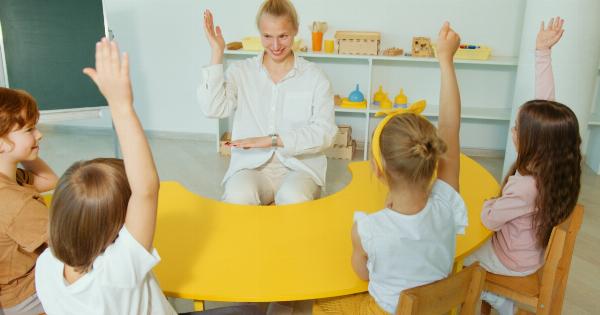Yelling is a common form of communication used by parents when they are frustrated, angry, or want to discipline their children.
While it may seem like an effective way to convey a message or gain control over a situation, yelling can have long-lasting negative effects on a child’s mental and emotional well-being. In this article, we will explore the impact of yelling on children and why it is important to find alternative methods of discipline.
The negative effects of yelling
1. Increased anxiety and stress:.
When children are constantly exposed to yelling, it can lead to heightened anxiety and stress levels. Yelling creates an environment of fear, uncertainty, and instability for children, making them constantly on edge.
2. Low self-esteem:.
Yelling can cause a child to doubt their abilities and worth. Constant criticism and negative reinforcement can erode their self-esteem, leading to feelings of inadequacy and low self-confidence.
3. Aggressive behavior:.
Exposure to yelling can normalize aggression for children. They may learn that yelling is an acceptable way to express their frustrations, leading to aggressive behavior towards others.
4. Child-parent relationship strain:.
Yelling breaks down trust and creates a disconnect between parent and child. Constant exposure to yelling can strain the child-parent relationship, leading to communication breakdown and decreased emotional connection.
5. Development of emotional problems:.
Children who are subjected to frequent yelling may develop emotional problems such as depression, anxiety disorders, and post-traumatic stress disorder (PTSD). The constant stress and fear can significantly impact their emotional development.
Why yelling is not an effective form of discipline
1. Ineffective communication:.
Yelling often comes from a place of frustration and anger, rather than a genuine attempt to communicate effectively. It can hinder clear communication and prevent the child from understanding the message behind the yelling.
2. Negative role modeling:.
By yelling at their child, parents are modeling aggressive and disrespectful behavior. Children learn by observation and are more likely to imitate the yelling, perpetuating a cycle of ineffective communication.
3. Decreased response to authority:.
Constant exposure to yelling can desensitize a child to authority figures. They may become resistant to following instructions or complying with rules, as yelling becomes a normal part of their environment.
4. Lack of understanding consequences:.
Yelling rarely provides an opportunity for children to understand the consequences of their actions. It focuses more on expressing anger rather than teaching valuable lessons or promoting positive behavior.
Alternative methods of discipline
1. Calm and assertive communication:.
Replacing yelling with calm, assertive communication can help foster a healthier parent-child relationship. Use clear and concise language to express expectations and consequences.
2. Active listening:.
Listening attentively to your child’s concerns and feelings can help them feel heard and understood. Practice active listening by maintaining eye contact, nodding, and providing validating responses.
3. Time-outs:.
When a child misbehaves, give them a designated space where they can calm down and reflect on their actions. Time-outs can be effective in teaching children self-regulation and giving them a chance to reset their behavior.
4. Positive reinforcement:.
Instead of focusing on negative behaviors, highlight and reward positive behaviors. Praise your child for their efforts and accomplishments, which reinforces positive behavior and boosts their self-esteem.
Seeking support
Recognizing the negative effects of yelling is an important step, but it is equally important to seek support when needed.
If you find it challenging to control your anger or have difficulty in finding alternative strategies, consider reaching out to a therapist or counselor specializing in parenting issues. They can provide valuable guidance and help you develop healthier ways of communicating and disciplining your child.




























